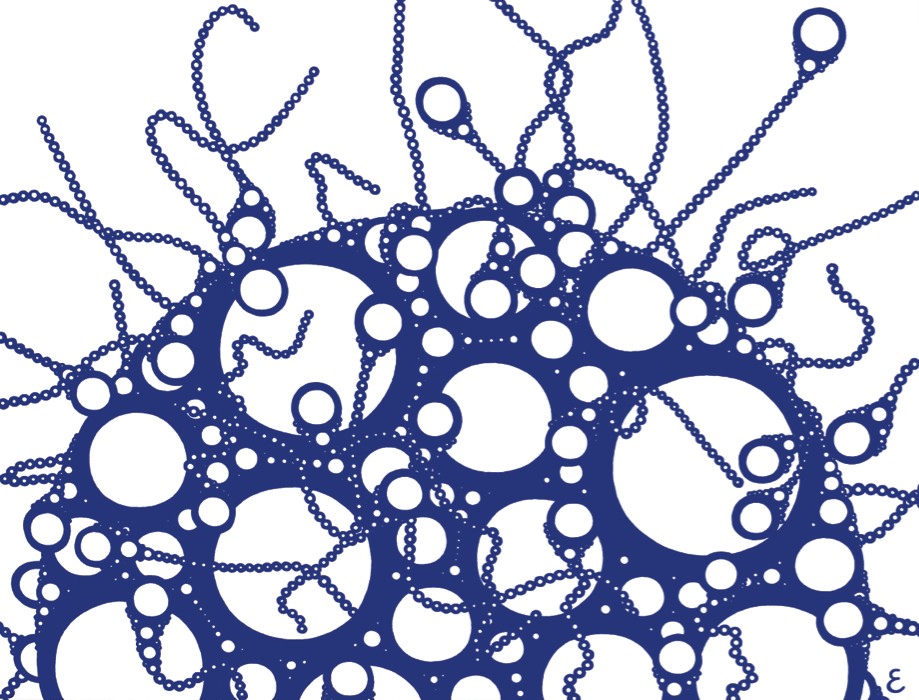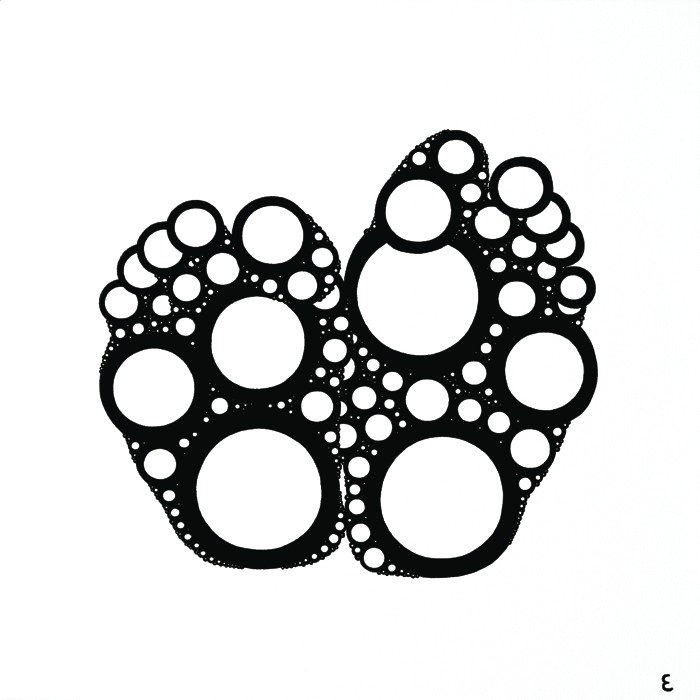There is an invisible relation between Logos and Mythos, that allows a dialogue between instances that seem to be far one from another. Already Gregory Bateson asked himself if there could be a profound analogy between grammar and anatomy, wondering if an inter-disciplinary science could be able to speak both languages.
If grammar is an ended sequence of rules necessary to the correct construction of every language and for anatomy we mean the study of the structures that compose a body or an artwork, this exhibition is the trace to follow for a contamination between research fields that appeared far away, but that have now crossed their sectorial borders. Postmodern science, by quantum physics, has produced into scientific disciplines some innovation characters. If previously there was a linearity, a clearness, now hues enter in modern physics, hues that open the research to new indicators – non properly scientific and undefined ones- that belong to esthetic categories, like “beauty, rigor, persistence, elegance and grace”.
Elisa Cella conceives a pictorial re-elaboration of this complex relation, creating a dialogue between aesthetics and scientific categories. In exhibited works, executed leaving white the canvas – as in a sterilized research field- biological elements appear, cells that bloom, open themselves setting free molecular components in dialogue with white space, creating suggestive landscape that, for similarity, recall V.Kandinskij paintings at the beginning of the last century, once the microscope discovery permitted to explore unthinkable words previously.
A work executed with a scientist survey, elements composed repeating the graphic sign of circle – in different dimensions – to obtain the final Form of the image in its completeness. The methodological repetition of sign, united with the power of finished work, allow to understand how Elisa Cella has appropriated in primis the scientific/analytic principle that, joined with the artistic one, allows to render explicit in her works the fusion between science and esthetic, overturning Carmagnola’s concept of “systemic sensibility” that is, in scientific approach, the “artistic principle of comprehension” that precede and dominate the analytical principle of explanation (Carmagnola, 1989).
Colors utilized, contrasting and intense, make the final work pleasant but covertly unstable and add to sign an additional contribution to the field of scientific investigation: exactly how happens in microbiology in witch organisms are emphasized and disclosed through contrast liquids. Also science, indeed, has inherently her own esthetic; it moves from a first intuition to a study of formulas and diagrams to obtain linear and functional systems, provided with rhythm and elegance.
It could be enough to think at the beauty and simple complexity that originate from the most revolutionary equation of the century: E=mc^2, a defined, essential and simple formula, certainly “smoothed” as opposed to intuition morphogenesis of Albert Einstein. Elisa’s works in their language reminds these linear but explosive formulas, able to generate autopoietical systems in which structures burst regenerates itself, contaminates and transform like as in an organism. A complex work, a constant reference between intellect and thought schemas, to remind us that life abandons forecast and control vectors to declare itself into unexpected models, suddenly escaping from every category and method.
Alessia Locatelli









